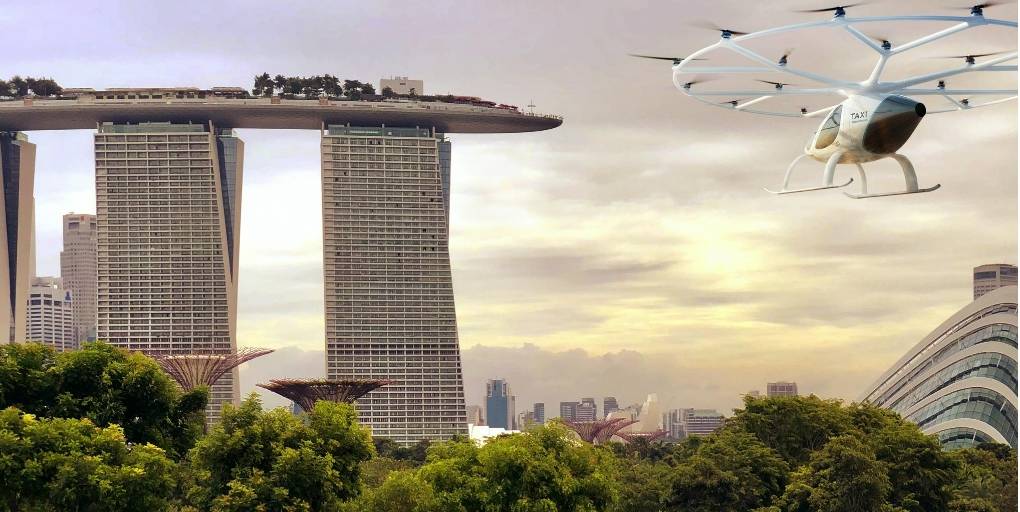
Vertical take-off and landing (VTOL) projects are spurring around the world. According to Oliver Wyman, there are an estimated 170 projects for flying taxis or VTOL aircraft worldwide. This futuristic scenario is getting closer, with Airbus, ADP and RATP announcing vertical take-off flying taxis for the 2024 Paris Olympics.
VTOLs are historically military aircraft designed to bypass the runways normally required for take-off and landing. The term VTOL or eVTOL is now being used to describe the flying taxi projects that are emerging. These aircraft are now possible thanks to new multi-rotor designs ranging from four to eight or even sixteen propellers (both safer because they are redundant and much quieter), advances in pilot automation and progress in electricity storage via lithium-Ion batteries, for example.
The advantages of these vehicles are interesting from an environmental point of view: less air pollution, less noise pollution, less road congestion and speed. However, the prohibitive cost of travel will probably not allow the general public to use these vehicles in the coming years, which is unlikely to drastically reduce road congestion and air pollution in cities. The limited space in the vehicles may explain this high price and is in opposition to the ecological model of a more decarbonized public transport. In addition, the manufacture of these devices, as well as their propulsion method (lithium-ion batteries or hydrogen for the cleanest) raises questions about their lifespan and their real carbon footprint.
The relatively high cost of these technologies requires the deployment of a service that allows the cost to be spread over several people, hence the boom in the flying taxi market or in delivery-related applications. Strict airspace regulations also make it more realistic for dedicated air corridors to be operated by clearly defined companies. Other companies are also targeting longer regional or intercity air travel, relying on hybrid engines.
The market is booming and is coveted by the aeronautics giants. Last September, Airbus unveiled plans for the new, fully electric CityAirbus, equipped with fixed wings, a V-shaped tail, and eight electrically powered propellers. It is designed to carry up to four passengers on a zero-emission flight with multiple applications. Its first flight is scheduled for 2023. Boeing has entered into a joint venture with Kitty Hawk to develop a startup, Wisk, described as an Urban Air Mobility (UAM) company. Last year it signed its first contract to operate air taxis in the US. Car manufacturers are also very active in the market. Hyundai has developed a vehicle called the S-A1 in collaboration with Uber. It can accommodate four passengers plus a driver, although Hyundai plans to operate the S-A1 autonomously in the future. Toyota has filed a patent for a “dual-mode” car that can be converted from a road-legal passenger car to a light aircraft.
On the startup side, fundraising is on the rise. Last year, German startup Volocopter closed a $241 million Series D fundraising round to certify its two-seat, piloted VoloCity aircraft and launch commercial air taxi services within the next two years. The company obtained the first European certification for test flights in a restricted area. The French startup Ascendance Flight Technologies raised €10 million in September 2021 and is banking on hybrid technology to launch its helicopter alternative within four years. Its aircraft are instead designed to operate in peri-urban areas and inland regions. Elroy Air is a Silicon Valley startup that is developing autonomous cargo aircraft systems to massively extend the reach of express transport. The company is developing the Chaparral, a VTOL air cargo platform. The first version of the Chaparral will carry 300 to 500 pounds of cargo over a 300 mile-range with its hybrid-electric powertrain and simple, redundant lift and forward motors. The vehicle can land, drop a load, pick up another load and take off again, all within minutes and without operator intervention.
Finally, although there is a lot of hype around VTOLs and that they become a reality, they face many challenges, such as high costs and environmental impact. It seems too early to imagine a science fiction landscape or mainstream use. The advent of VTOL drones – particularly for delivery operations – seems more relevant and likely to develop in the coming years.
2 Key Figures
By 2035, the flying taxi market could be worth $35 billion
With 40,000 to 60,000 flying machines in 60 to 90 cities – Challenges
1,6B+ in investments for VTOL
with 70+ companies registered by Tracxn
3 startups to draw inspiration from
This week, we identified three startups that we can draw inspiration from: Volocopter, Ascendance Flight Technologies and Elroy Air.
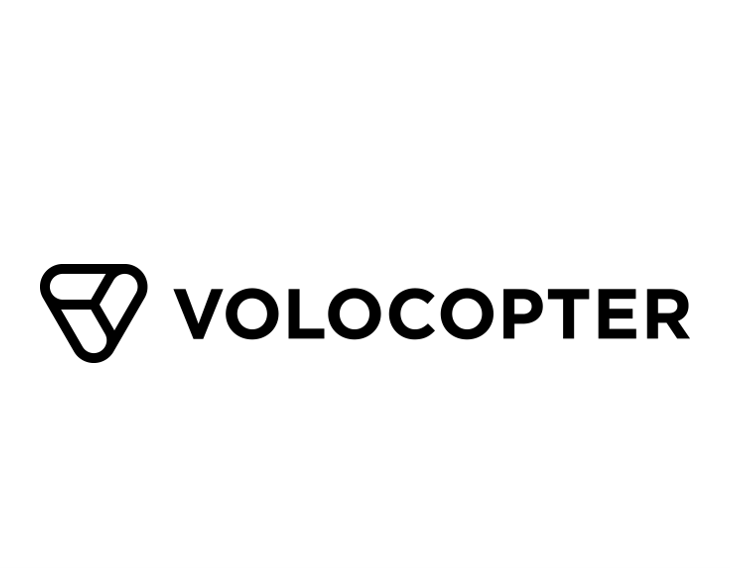
Volocopter
The German startup develops electrical vertical take-off and landing multicopters designed to transport people safely. The company’s engines can fly completely autonomously or be easily operated using a joystick and assistive systems for support, enabling users to travel by air.
Its urban air taxi, Volocity, has 2 seats, 18 rotors and is fully electric. The company has developed another model, VoloConnect, for longer distances, which can carry up to four passengers for 100 km. It is equipped with two propulsion fans plus six electrical motors and rotors.

Ascendance Flight Technologies
The French startup is a manufacturer of hybrid-powered aircraft systems designed to change the way people move around cities. The company’s systems are able to blend into existing infrastructures and regulations to ease its deployment and maximize social acceptance.
The startup has developed the Altea VTOL aircraft, capable of carrying 4 passengers on regional or intercity routes of up to 2 hours and over 400km. It has 8 rotors integrated in two fixed wings, 2 horizontal propellers and a hybrid-electric propulsion system.

Elroy Air
The startup develops automated drones and aircraft designed to aid in defense and logistics sectors. They use a combination of light detection and ranging, radar, cameras, and air-traffic management software to enable clients to benefit from express shipping and rapid autonomous aerial resupply to troops in the field.
Elroy Air has developed the Chaparral, a VTOL aerial cargo platform. It will be able to carry 300-500lbs of cargo over a 300-mile range thanks to its hybrid electric engine and six vertical rotors. It has a robust set of applications in national defence.
Interested in a startup landscape or in an insights report?
Please fill out our contact form so that we can get back to you very quickly with our product offer.
Want to subscribe to our 123Fab?
Fill out our form to receive the latest insights into your inbox.
123Fab #72
1 topic, 2 key figures, 3 startups to draw inspiration from

As concerns about climate change grow and energy use is at an all-time high, the need for an affordable, scalable, and low emission electricity source is clear. And while geothermal energy might not be the first source that comes to mind when talking about renewable energy, its potential is huge and startups and investors are investing in the field.
Producing electricity using geothermal energy is a straightforward process: the lower layers of the earth are hot and some of them contain pools of water at high temperature and pressure. To access as much of this water as possible, a fracturing step is used to improve the permeability of the surrounding rocks, called “fracking”. The water is pumped out and turned into steam when it reaches the surface. The steam passes through a turbine to produce electricity. Once it passes through the turbine, the pressure drops and the steam turns back into water, which is sent back underground.
One of the main drawbacks of this technique is that these pools are often very deep underground and the drilling of the well is exponentially expensive with the depth, but some startups are tackling this problem: Strada has developed a patented “water hammer” technology, a frac-free drilling method that they claim can reduce time and cost by up to 70% compared to conventional technology. Eden Geotech provides electro-hydraulic fracturing technology that enhances geothermal well production by increasing the liquid flow within the well. One of its advantages is that the electricity used for fracking can be produced by the geothermal power plant itself, lowering the ecological impact of the process. Eavor, on the other hand, offers a geothermal solution that does not require fracking with its Eavor-loop system. It harvests energy using its proprietary fluid flowing inside a chain of lateral wells dug several kilometers underground.
Another obstacle to the widespread adoption of geothermal energy is that it is location-dependent, as pockets of very hot, deep water are not found everywhere. Other technologies focus on “low enthalpy” geothermal wells, where the liquid temperature reaches 70-90°C, which are more abundant and closer to the earth’s surface. One way of producing power using these wells is through an Organic Rankine Cycle (ORC), which involves bringing hot water into contact with another liquid that has a lower boiling point and using the steam produced to generate electricity. Greenstorc has developed a proprietary fluid that evaporates at 50°C and creates 250 times more steam than water, thus reducing the energy loss of the conversion. Climeon produces modules using the ORC principle that can operate between with a hot source of 80 to 120°C and can be associated in parallel and in series, making it scalable to a wide range of flows and power generation needs.
The innovative geothermal energy production technology has attracted the attention of larger corporations: BP and Chevron led Eavor’s last year’s funding round. Two years ago, Climeon successfully installed its technology on virgin voyage’s first ship, using the waste heat from cooling systems as a heat source. Their technology is to be installed on Virgin’s first 4 ships.
In short, geothermal energy can be a viable and reliable energy source, as evidenced by Iceland, where 25% of the electricity is produced using geothermal energy. Nonetheless, these applications remain geographically constrained and are very expensive, but work continues to expand their use in less optimal conditions.
2 Key Figures
The geothermal energy market is expected to reach $6.8bn by 2026
The global geothermal energy market reached $4.6 bn in 2018 and is expected to grow at a CAGR of 5% over the period 2019-2026 – Allied Market Research
+350 funded companies in geothermal energy
registered by Tracxn
3 startups to draw inspiration from
This week, we identified three startups that we can draw inspiration from: Strada, Eden Geotech and Eavor.

Strada
The UK-based company provides onshore geothermal drill rig technology and specializes in providing deep geothermal well construction and completion services with access to patented drilling rigs and fluid percussion drilling methods.
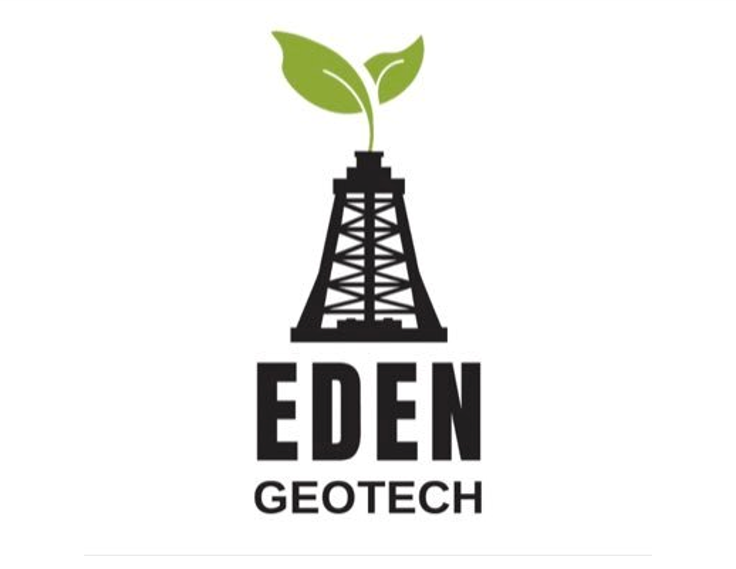
Eden Geotech
Eden Geotech provides reservoir stimulation technology intended to enhance oil, gas and geothermal productivity. The company has developed water-less and injection-free technology and solutions to change the petrophysical properties of rock formation, create micro-fractures and increase permeability.
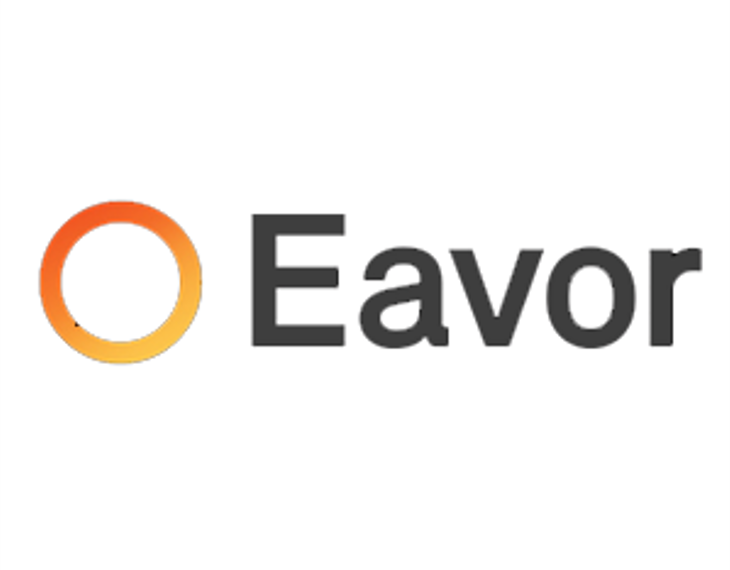
Eavor
Based in Canada, climeon developed a power generation technology designed to mitigate or eliminate the issues that have hindered traditional geothermal alternatives. The company’s technology circulates a benign working fluid that is completely isolated from the environment in a closed-loop and collects heat from the natural geothermal gradient of the Earth.
Interested in a startup landscape or in an insights report?
Please fill out our contact form so that we can get back to you very quickly with our product offer.
Want to subscribe to our 123Fab?
Fill out our form to receive the latest insights into your inbox.
123Fab #71
1 topic, 2 key figures, 3 startups to draw inspiration from

On October 28, 2021, Facebook Inc. announced the new name of its parent company: Meta. The message is strong and demonstrates the group’s strategic shift towards the 3D universe, and particularly the metaverse. The latter is a combination of multiple elements of technology, including virtual reality and augmented reality where users “engage” within a digital universe. The concept behind the metaverse is the introduction of new online environments whereby interactions between people are highly multidimensional, wherein they can immerse more interactively with digital content instead of just receiving information. For Meta, this world promises more social contact without going anywhere, whether it’s organizing a business meeting, attending a fitness class or strolling through a pixel shop.
There are several factors that explain why the metaverse is back in the spotlight. First of all, the Covid-19 epidemic and the lockdowns have greatly accelerated the digitization of our societies (zoom meetings, aperitifs or even online museum visits…) and the emergence of virtual communities as major living spaces, including interactive gaming landscapes as well as increasing adoption of mixed reality. Also from a technical point of view, digital infrastructures are becoming more and more powerful, the boom in virtual reality is becoming real and the development of 5g promises unprecedented speeds.
The race to the metaverse is therefore on and the competition is fierce. The uses are also numerous. Microsoft, for example, intends to create an “enterprise metaverse”. Its Mesh mixed reality collaboration platform, designed for Teams among other things, will begin previewing in 2022 with a set of pre-built immersive spaces for things like meetings and social gatherings. The company also specializes in the design of digital twins. Epic Games, the world of the popular game Fortnite, which raised $1 billion this year, is already hosting virtual mini-concerts with 12 million viewers. Regarding video games, one of the leaders remains Roblox, a free-to-play software that allows any user to create games and sell them. In this system of play and creation, one in five players will change their avatar every day, just as a person gets up and gets dressed every morning. Thus, the metaverse also offers luxury brands the opportunity to take advantage of digital collectibles and the rise of ‘social gaming’. Several brands, such as Gucci and Lagerfeld, have already held virtual exhibitions and digital model sales. Thanks to NFTs, linked to the blockchain, transactions are encrypted, secure and the items sold are unique, thus preserving their value.
The potential of the metaverse is therefore very large and major groups are not hesitating to join forces with the most successful startups in the field to get ahead. This is the case, for example, of Nike, which has announced the acquisition of RTFKT, a startup specialized in the creation of digital fashion objects for the metaverse. Whether it is in the development of new uses or new technical tools, startups are very active in this field. For example, Stockholm-based startup Gleechi, which launched in 2014, has developed a technology called VirtualGrasp, which enables a more natural hand interaction in virtual reality. It has partnerships with companies such as Siemens Energy, Scania and Saab Aeronautics to develop virtual training programmes. Another startup, Scapin’, based in Stockholm, is developing a mobile social communication platform that allows anyone to create personalized virtual spaces, either to connect with friends or to offer experiences to an audience.
On the basis of end-use, the global metaverse market is segmented into fashion, media & entertainment, education, aerospace & defense, and others. The media and entertainment segment is expected to account for the largest share of the global metaverse market over the next ten years, owing to the growth of the gaming industry worldwide. Although the metaverse is not yet well developed in the service of industry, its ability to deepen the digital continuity of companies, i.e. the digital availability of all product information throughout their life cycle, could also radically change the sector. Thanks to augmented reality but also to blockchain, which allows data to be authenticated and traced, the metaverse could be a real-time access point to all the information needed to manage production sites.
In short, the metaverse is not simply a new technological innovation, but rather a new technological paradigm that allows all the technologies that make up tomorrow’s digital world to converge: augmented reality, virtual reality, blockchain, NFT, etc. By enabling companies to develop their digital continuity at both the production and consumption levels, the metaverse provides them with a digital backbone that is destined to become indispensable in many sectors. However, concerns about data privacy and security in metaverse environments, user identity issues, and difficulties in convincing users to use payment systems in these environments are some of the key factors that are expected to hamper metaverse growth.
2 Key Figures
The metaverse revenue is expected to reach $828.95 bn by 2028
The global metaverse market size reached $47 bn in 2020 and is expected to register a revenue CAGR of 43.3% during the period 2020-2028 – Emergen Research
+1,300 funded companies in virtual reality
registered by Tracxn
3 startups to draw inspiration from
This week, we identified three startups that we can draw inspiration from: Gleechi, Powder and Scapin’.

Gleechi
The startup is specialized in developing software that makes it easy to animate realistic hand movement and interaction in games and virtual reality.

Powder
The French startup Powder aims to be a “metaverse camera”. It uses video recording and artificial intelligence to automatically detect and capture players’ highlights and share them with other players on the network.
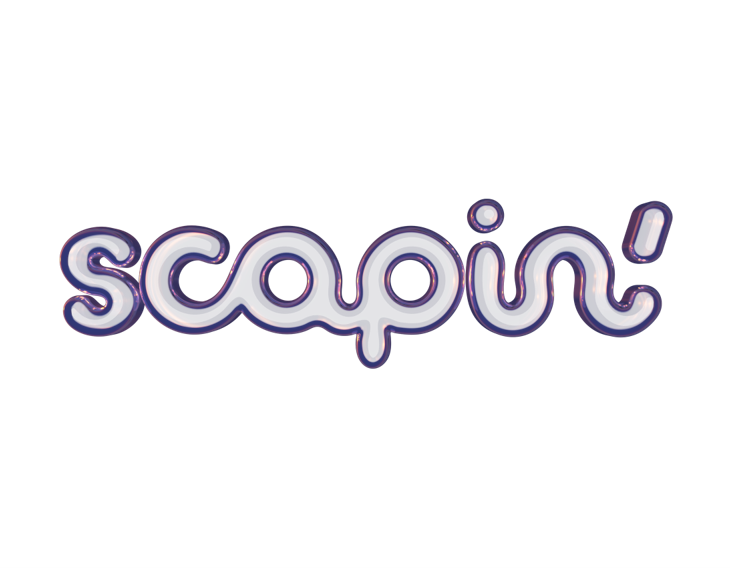
Scapin’
The Stockholm-based startup has developed a mobile social communication platform that allows anyone to create personalised virtual spaces, either to connect with friends or to offer experiences to an audience.
Interested in a startup landscape or in an insights report?
Please fill out our contact form so that we can get back to you very quickly with our product offer.
Want to subscribe to our 123Fab?
Fill out our form to receive the latest insights into your inbox.
123Fab #70
1 topic, 2 key figures, 3 startups to draw inspiration from
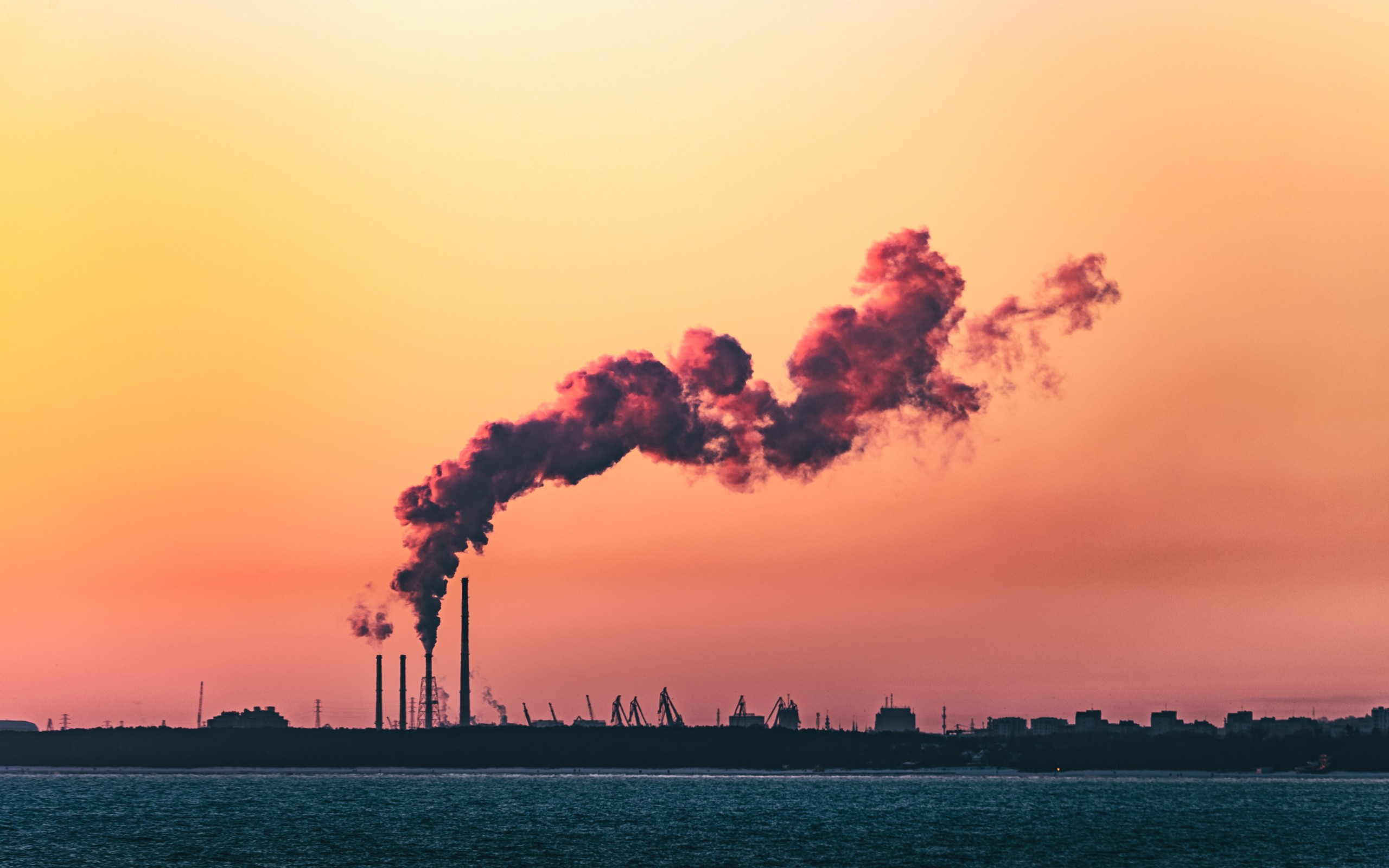
As the world is looking for solutions to curb CO2 emissions and mitigate climate change, Carbon Capture, Utilization and Storage (CCUS) technologies have raised hope, especially for heavy emitters in the Oil & Gas or manufacturing sectors. The principle is simple: CO2 produced when burning fossil fuel is captured before it enters the atmosphere, and either safely stored or used as feedstock to make other products. The major obstacle regarding this technology is its cost. The capture step itself is costly, both financially and energetically, especially for low CO2 concentration flows. For carbon storage, the captured CO2 needs to be compressed and shipped to its destination and stored. All of these steps are also costly and energy-intensive, resulting in relatively low adoption. Carbon reuse solutions attempt to reduce the overall cost of the process by using CO2 to produce valuable products that can be sold.
There are a wide variety of solutions to valorize captured CO2: from producing carbon fibers using algae to producing building materials such as cement, concrete, or insulation foam, the possibilities are numerous. One utilization scheme seems to have caught the attention of investors and entrepreneurs: the production of carbon-neutral fuel using CO2.
Some startups are focusing on reducing emissions in the transportation sector by producing an alternative fuel from captured CO2. Caphenia produces jet fuel using CO2 and methane as feedstock through a plasma process. Their process could reduce CO2 emissions by 92% compared to fossil fuel consumption. Other startups like Nordic Electrofuel produce it using CO2 and hydrogen produced from water electrolysis using renewable electricity. CERT systems has developed catalysts for electrodes used in electrolyzers to enhance the conversion rate of their CO2 to fuel electrochemical conversion technology.
Methanol is also an attractive alternative fuel that can be used to power cars and ships. Liquid wind and Carbon Recycling International are using CO2 and hydrogen to produce renewable methanol for maritime and road transport. Methanol has been proven to be a viable fuel for ships, and if mixed with petrol, it could also be used for cars, reducing the footprint of road transport as well. In addition, it is a widely used feedstock for the production of plastics, plywood, and synthetic fibers. The use of renewable methanol could also reduce emissions from the chemical industry.
CO2-based fuels are attracting the attention of large companies and partnerships are booming. Last month, Eramet signed a partnership agreement with Nordic Electrofuel to use the CO2 produced in Eramet’s furnace to produce kerosene. Carbon Recycling International joined forces with Johnson Matthey for catalyst supply in CRI’s methanol plants. Earlier this year, Siemens Energy partnered with Liquid Wind. Siemens will provide large electrolyzers that will produce hydrogen for liquid wind’s process.
While alternative fuels seem to be a good solution for decarbonizing the transportation industry, they have one major drawback: all these processes are very energy-intensive. Hydrogen production, which is mostly done through water electrolysis, and plasma technology both consume large amounts of electricity. These processes could use renewable energy, but it is not easy to fund such a large amount and, depending on the energy mix of the available electricity, the ecological impact varies greatly by location. These costs add to the CO2 capture cost, as the removal of CO2 from air or flue gas is very energy-intensive, lowering the ecological benefits of the process. More than that, when this fuel will be consumed, the captured CO2 is released into the atmosphere. The ecological outcome is not strictly zero as the CO2 produced in the first place is eventually released, it simply adds another step in the CO2 use cycle. Although alternative fuels appear to be crucial for lowering emissions of the transportation sector, captured industrial emissions remain untouched by the process, and reducing the number of travels remains the most efficient way to cut down emissions in the transport industry.
2 Key Figures
The global CCUS market is expected to reach $2.97 bn by 2025
The global CCUS market was estimated at $1.3 billion in 2020 and is expected to reach $2.97 billion by 2025, at a CAGR of 19.6% according to PR Newswire
20+ CO2 to fuel startups
registered by Tracxn since 2015
3 startups to draw inspiration from
This week, we identified three startups that we can draw inspiration from: Nordic Electrofuel, CERT systems and Carbon Recycling International.
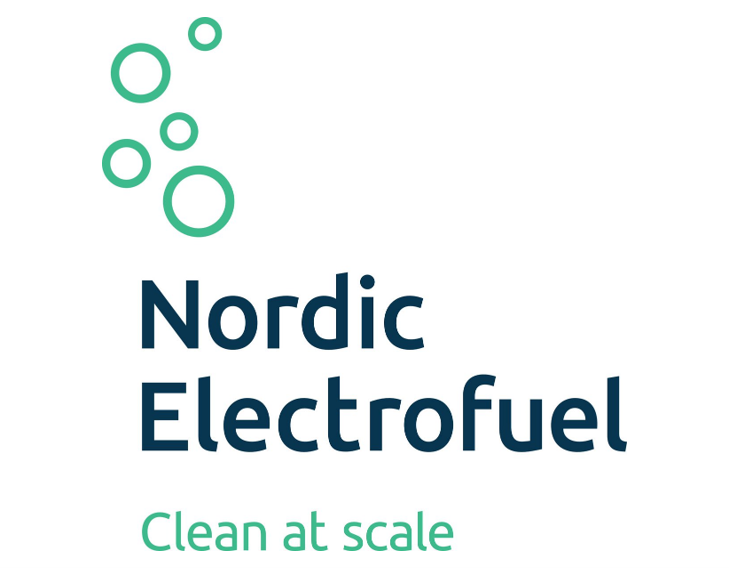
Nordic Electrofuel
Producer of carbon-neutral, synthetic fuels and other fossil replacement products intended to offer renewable electrical energy to the transport sector. The company specializes in generating synthetic gas by separating CO and H2 gas through electrolysis and offers solutions to distribute and store stranded electrical energy and the conversion of renewable electric energy into liquid e-fuels.
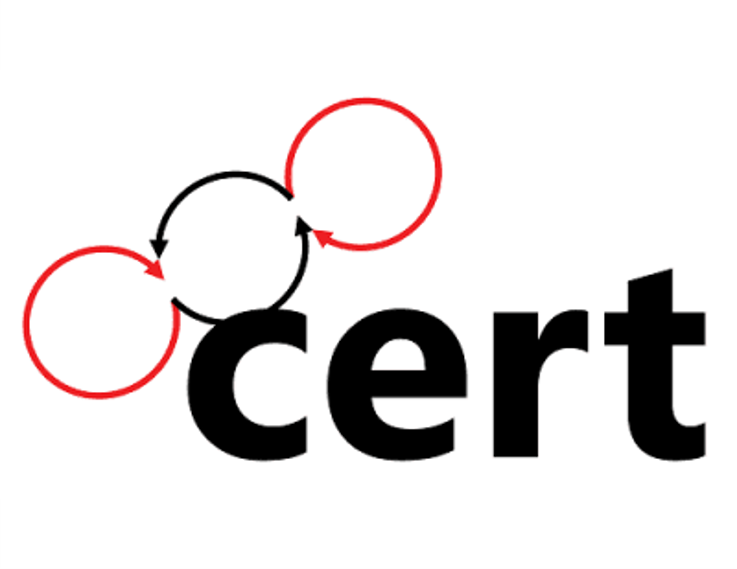
CERT Systems
CERT Systems is a Toronto-based startup that develop a CO2 utilization system intended to catalyze the closure of the carbon cycle. The company’s system utilizes membrane electrode assembly (MEA) electrochemical cells and converts carbon dioxide into renewable fuels and chemical feedstocks using only water and electricity.
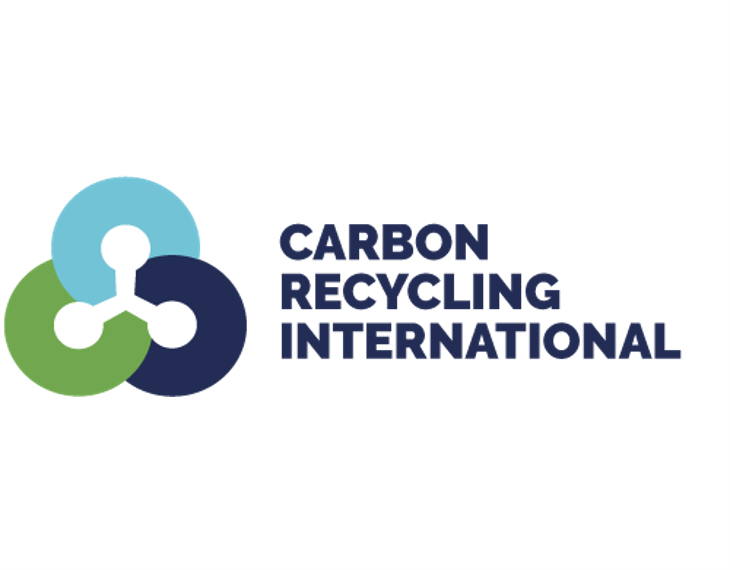
Carbon Recycling International
Carbon Recycling International produce renewable methanol intended to enhance resource efficiency by carbon recycling. Their renewable methanol is produced from carbon dioxide, hydrogen and electricity for energy storage, fuel applications and efficiency enhancement.
Interested in a startup landscape or in an insights report?
Please fill out our contact form so that we can get back to you very quickly with our product offer.
Want to subscribe to our 123Fab?
Fill out our form to receive the latest insights into your inbox.
123Fab #69
1 topic, 2 key figures, 3 startups to draw inspiration from

According to the International Energy Agency’s “Net Zero by 2050” report, the world will need 2,600 GW of hydropower capacity by mid-century to have a chance of keeping the global temperature rise below 1.5 degrees Celsius. In other words, we would need to build the same amount of hydropower capacity in the next 30 years as we did in the previous 100.
Hydropower is now the leading renewable source and the third largest source of electricity production in the world (15.8% in 2018) behind coal (38%) and gas (23.2%). Over the last 20 years, total hydropower capacity has increased by 70% globally, but its share of total generation has remained stable due to the growth of wind, solar PV, coal and natural gas. Hydropower is the harnessing of energy from a flow of water by means of a turbine connected to a generator, turning it into electricity. Most hydropower plants store water in a dam, which is controlled by a valve to measure the amount of water flowing. More recently, new uses of water as an energy producer have emerged, including the use of seas and oceans for tidal or wave energy.
Emerging and developing economies have led the global hydropower growth since the 1970s, primarily through public sector investment in large-scale plants. Throughout the life cycle of a power plant, hydropower offers great advantages, notably some of the lowest greenhouse gas emissions per unit of energy generated. Moreover, security and flexibility are increased with this mode of electricity production. Power plants can generally ramp up and down their electricity production very quickly, allowing them to adapt to variations in demand or to offset fluctuations in the supply of other sources of electricity. Today, hydropower plants account for almost 30% of the world’s flexible electricity supply capacity. It therefore appears that the role of renewable energy will become increasingly important over the next few decades, both as a low-carbon provider of electricity and to support the huge growth in wind and solar power needed to limit global warming.
In advanced economies, the share of hydropower in electricity generation has been declining and plants are ageing. The business case for hydropower plants has deteriorated due to high infrastructure costs and lack of certainty about long-term revenues. There are also real challenges related to complex permitting procedures, environmental and social acceptance, and long construction periods. In China, the construction of the Three Gorges Dam, which began in 1994, displaced 1.4 million people and has reportedly caused numerous landslides and earthquakes since. Current power plants are also ageing: in North America, the average hydropower plant is nearly 50 years old; in Europe, the average is 45 years old. There is a real need for modernization but also for updated sustainability standards and measures to minimise risk and reduce project delivery times.
In response, governments are stepping up to provide funding and new innovations are emerging. On November 5th, the U.S. House of Representatives passed the more than $1.2 trillion Infrastructure Investment and Jobs Act, which includes over $900M in waterpower incentives for new and existing hydropower, pumped storage, and marine energy. Several startups also have innovated in the face of complex infrastructure development procedures and heavy budget requirements. For example, Natel Energy uses pre-existing facilities and discontinue dam building to make hydropower less costly. It also developed a turbine that requires less cement and steel and which is safer for aquatic life. Dutch startup Blade Runner Energy offers a scalable micro-hydro solution which harnesses the energy of the natural flow of water without needing to build a dam. Others use the power of water differently, especially to avoid the social and environmental problems caused by dams. This is the case of Hace, which is developing a patented process that takes advantage of the immense reserve of wave energy to produce electricity with integrated energy stations. Another example is the US-based startup Big Moon, which is developing a technology to harness tidal energy without installing anything on the ocean floor or creating a negative impact on the environment. The longevity of these installations is often superior than that of wind turbines and solar panels. Tidal plants can last about four times as long. However, the initial costs of this type of project are still very high (for example, the Sihwa Lake Tidal Power Station cost $560m) and research has not yet fully determined the impact of the project, including EMF emissions on marine life.
Thus we see that hydropower has a key potential for the future in the constitution of a new energy mix and in support of other renewable energies. Government action will be crucial in setting their priorities and willingness to modernise the current fleet, especially for China which is set to remain the single largest hydropower market through 2030, accounting for 40% of global capacity growth (the International Energy Agency). Policy measures that provide more certainty about future revenues can reduce investment risks and ensure the economic viability of hydropower projects. But today, this support remains limited, with less than 30 countries targeting hydropower.
2 Key Figures
Global hydropower capacity is set to increase by 17%, or 230 GW, between 2021 and 2030
The International Energy Agency
132 hydropower funded companies
registered by Tracxn in 2019
3 startups to draw inspiration from
This week, we identified three startups that we can draw inspiration from: Blade Runner Energy, Hace and Big Moon.

Blade Runner Energy
The startup develops micro-hydro energy services intended to generate sustainable power. This small-scale hydropower generation can provide energy to hard-to-reach and remote areas, and to achieve faster returns on investment, due to the low capital costs of building these plants.
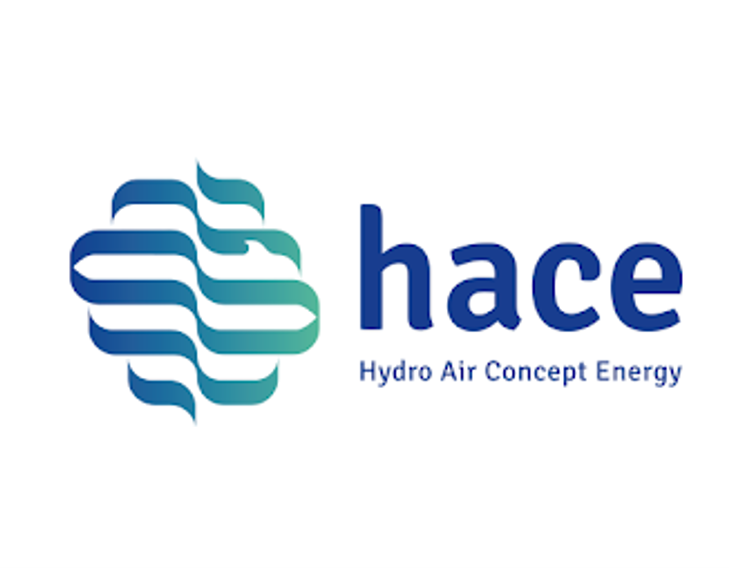
Hace
The startup technology intends to generate electricity by harnessing the power of ocean waves. It offers modular organization of wave power generators makes it possible to create wave power parks or to build coastal protection dikes that integrate energy production.

Big Moon
The startup created a tidal energy technology designed to harness tidal energy without negatively impacting the environment. The solution does not use any type of electrical component and does not attach equipment to the seafloor.
Interested in a startup landscape or in an insights report?
Please fill out our contact form so that we can get back to you very quickly with our product offer.
Want to subscribe to our 123Fab?
Fill out our form to receive the latest insights into your inbox.
123Fab #68
1 topic, 2 key figures, 3 startups to draw inspiration from
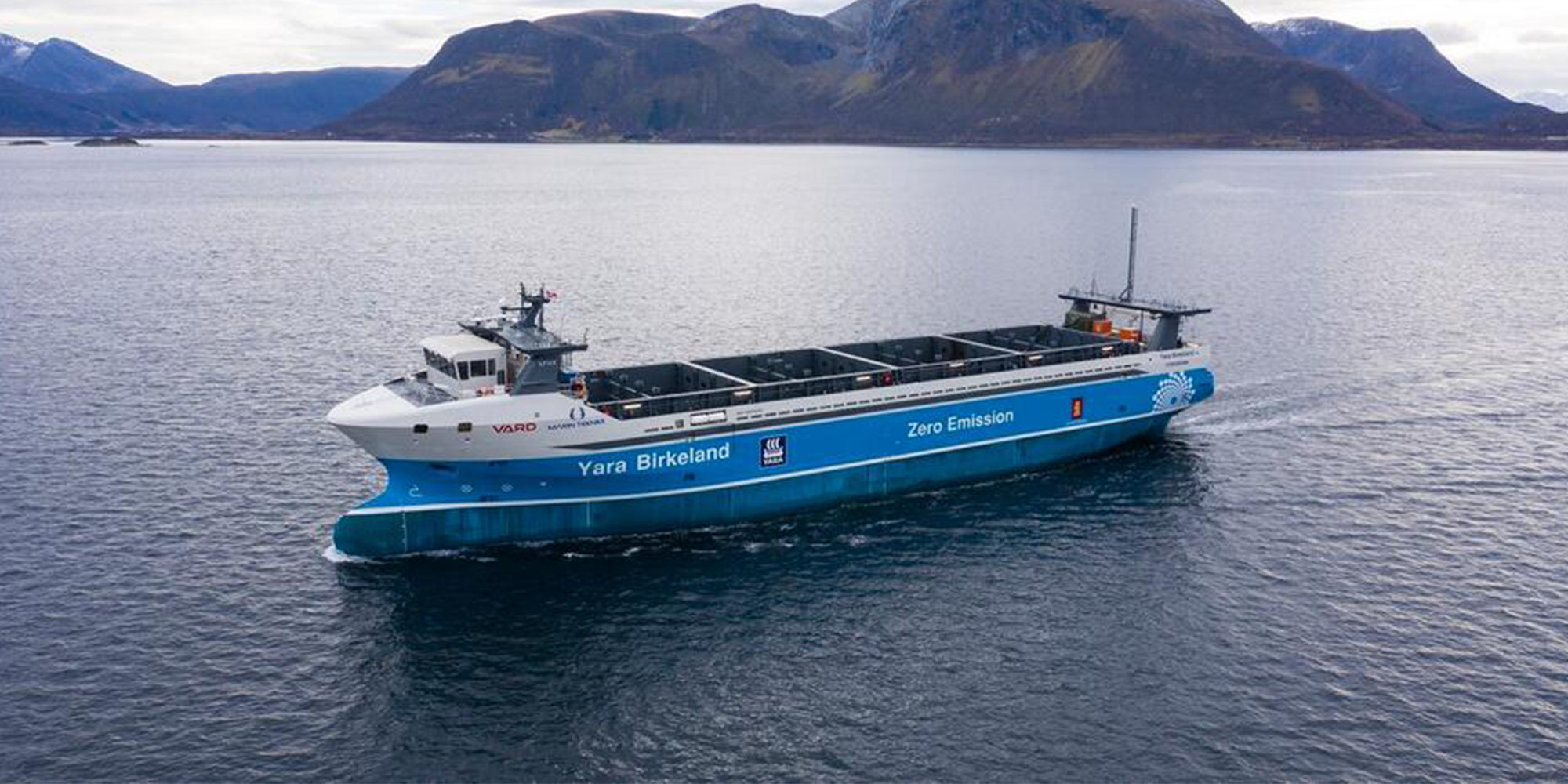
It’s omnipresent. Decarbonization is underway in many sectors: micromobility, automotive, rail… In last week’s 123Fab, we even saw that a new generation of tractors is making inroads in agriculture. But what about the sector of maritime shipping?
Cargo and container ships, which refer to merchant ships carrying goods and materials from one port to another, are responsible for nearly 1 billion metric tons of carbon each year. Although the industry accounts for a relatively small share of global CO2 emissions — between 2% and 3% according to S&P Global Platts Analytics — scientists have projected that maritime shipping could account for 17% of total emissions by 2050. That’s why the International Maritime Organization (IMO) has set a target of decarbonizing global shipping by at least 50% from 2008 levels by 2050.
Yet many were left disappointed by the Glasgow Climat Pact, the outcome of the COP26 climate conference. Although steps forward have been made since the Paris agreement, which did not include maritime shipping at all, the only concrete outcome that came out of it is the ‘Clydebank Declaration’. The signatory countries agreed to support the creation of at least six green corridors by 2025. Initial analyses focused on two promising candidates for developing green corridors: the iron ore route from Australia to Japan, and container shipping from Asia to Europe. But out of the 50,000 ships currently plying international shipping lanes, only 200 will be green by 2030. This reflects the costs and complexity of decarbonizing shipping. Indeed, alternative fuels are more expensive than conventional heavy fuel oils, they have a lower volumetric density requiring the manufacture of larger tanks and the fragmentation of the industry is such that the incentive to invest in these technologies is low. Maersk, which owns the largest shipping fleet, announced that it would only have 8 ships ready to run on methanol by 2025. The lack of ambition on shipping emissions has thus been strongly criticized, with COP26 seen as a missed opportunity to push the industry for more rigorous commitments.
In the maritime industry, a number of measures can support its decarbonization, resulting in multiple possible pathways. In other words, there is no silver bullet to a low-carbon trajectory. However, only a combination of technological innovation, operational measures and alternative fuels will deliver sufficient CO2 reductions.
- Technological innovation — these refer to innovations applied to ships to help increase their energy efficiency. These can relate to the weight of ships (lighter materials), the design of ships, ways to reduce friction (hull coatings and air purification) and ways to recover energy (propeller upgrades and heat recovery).
- Operational measures — these refer to ways in which ships are operated. 4 types of measures can be distinguished: speed, ship size, ship-port interface (lower waiting time before entering a port) and onshore power (change their power supply from vessel’s engines to shore-based electricity).
- Alternative fuels and energy — numerous fuels exist to replace bunker fuels such as liquified natural gas (LNG), hydrogen, ammonia, methanol.
When it comes to alternative fuels and energy many possible options are currently being explored. While deep-sea vessels must store large amounts of energy to maintain a constant speed over long distances, the options are more varied for short-haul vessels, including the possible use of electric or hybrid-electric power and propulsion systems. Overall, there is a lack of technology when it comes to alternative fuels. If shipowners have begun to convert existing ships to run on LNG, it still emits methane. Biofuels are another solution that is becoming increasingly available as a marine fuel. Unlike LNG, it can be a carbon-neutral solution, but mass-scale biofuel production is not sustainable, which puts it in the same position as liquefied petroleum gas (LPG): a good solution but not a panacea. In the long-term, technological solutions, such as green hydrogen and ammonia, are expected to take hold. Intrinsically carbon-free, these fuels produce zero CO2 emissions when sourced renewably. In fact, the shipping industry is banking heavily on ammonia. Unlike hydrogen, it does not need to be stored in high-pressure tanks or cryogenic dewars and its energy density is 10 times that of a lithium-ion battery. However, for ammonia-fueled shipping to become a reality, port operators and fuel suppliers must build vast bunkering infrastructure so that ships can fill ammonia tanks wherever they dock. And technologies are still underway.
But decarbonization, while still in its infancy, is making progress. In November 2020, Yara claimed to have delivered the world’s first net-zero, battery-powered autonomous container ship to Norway. While it had been in the port of Horten ever since, undergoing further preparations for autonomous operation, the Yara Birkeland completed its first trip to Oslo (around 70km) at the beginning of the week. Alongside the construction of the ship, Yara has also initiated the development of green ammonia. As the world’s largest producer of fertilizers, and thus of ammonia, it is striving to push decarbonization in the shipping industry forward. At the same time, startups are positioning themselves on the topic. Greek startup DeepSea Technologies provides a vessel emission tracking solution, Norwegian startup TECO 2030 develops modular hydrogen fuels and American startup Prometheus Fuels removes CO2 from the air and turns it into zero-net carbon gasoline. In September of this year, Maersk announced its investment in the American startup.
In short, discussions around decarbonizing the shipping sector are emerging yet most measures focus on making ship design and the operation of vessels more energy efficient. To achieve the decarbonization of the industry, mechanisms increasing the use of alternative propulsion technologies will need to be strengthened. However, regulation and financial incentives will be necessary to make them technologically feasible and their adoption commercially viable, to reduce the current price gap between conventional ship fuel and more sustainable options.
2 Key Figures
At least $1 trillion in investments needed to decarbonize shipping
According to the Global Maritime Forum, the scale of cumulative investment needed between 2030 and 2050 to achieve the IMO target of reducing carbon emissions from shipping by at least 50% by 2050, is approximately USD 1-1.4 trillion, or on average between USD 50- 70 billion annually for 20 years.
1,177 Maritime startups
registered by Tracxn
3 startups to draw inspiration from
This week, we identified three startups that we can draw inspiration from: Prometheus Fuels, Hy2Gen and Shone.

Prometheus Fuels
The startup extracts CO2 from the air, creating hydrocarbon fuel with zero impact on greenhouse gas levels, enabling cars, planes and ships to replace fossil fuels with high-performance zero-net carbon fuels made from CO2 that’s already in the air.

Hy2Gen
The startup develops, builds and operates plants for the production of green hydrogen and hydrogen-based e-fuels. Hy2Gen recently joined forces with Swiss commodity trader Trafiguar to investigate green ammonia as a marine fuel.

Shone
The startup has developed a shipping automation platform that uses AI to provide a digital co-pilot to improve the safety and energy efficiency of maritime operations, enabling reductions in fuel consumption and carbon emissions.
Interested in a startup landscape or in an insights report?
Please fill out our contact form so that we can get back to you very quickly with our product offer.
Want to subscribe to our 123Fab?
Fill out our form to receive the latest insights into your inbox.
123Fab #67
1 topic, 2 key figures, 3 startups to draw inspiration from

Within weeks, in January 2021, the 215 million euros allocated to the conversion of agricultural equipment in France were distributed by the government as part of the 2020-2022 stimulus plan. This measure, implemented in early 2021 following the COVID19 crisis, consisted of investment assistance for the replacement of old and inefficient equipment and the acquisition of environmentally efficient equipment. Indeed, agriculture is one of the world’s biggest greenhouse gas contributors. The sector is projected to account for about 20% of total global emissions in the next 20 years (Reuters). According to a McKinsey report, of the 25 measures identified to reduce emissions, replacing tractors and combine harvesters that use fossil fuels with lower-emission vehicles would have the biggest impact, although no vehicles are commercially available now on the market. From a more global perspective, electrification is truly underway. Fully electric cars now account for 7.5% of new sales in Europe, and truck manufacturers are also moving towards sustainable mobility.
Despite the lag in the electrification of agricultural machinery, particularly the heavier ones, the seeds are sown for the electrification of farming vehicles and multiple companies already have been working on electric-powered prototypes. According to IDTechEx, the market for electric vehicles in the construction, agriculture and mining sectors could reach $149 billion in 2030. John Deere, an industry leader, has proposed a conceptual model of electric tractors that could allow autonomous operation, increasing efficiency and accuracy. Cable power could even eliminate the need for onboard batteries, so an electric version would not weigh more than its fossil-fueled counterpart. Japanese company Kubota also presented models that allow for autonomous operation and can adjust to the height in the field. The company’s concept tractor was also equipped with an onboard solar battery. California-based Solectrac already offers small tractors and agricultural utility vehicles in the 30 and 40 horsepower range. Other relatively small tractor options are offered by Fendt, Rigitrac, Escorts and others. At the same time, almost all aerial drones are electric. Research is focusing on small electric ground-based autonomous vehicles, such as robots that sense the plant environment. They could be particularly helpful for family farms in developing regions that still use non-mechanized methods for agriculture.
Some startups are also tackling this market and fundraising is on the rise. Silicon Valley-based company Monarch Tractor, which creates electric robotic tractors to make farming safer and more sustainable, raised $20 million in March as it prepares to start deliveries. The startup calls its tractor “driver optional” as it can perform programmed tasks without a driver. It is designed with roll and collision prevention and can collect and analyze data. Startup Blue White Robotics, which notably retrofits traditional tractors into fully autonomous vehicles by adding sensors and AI models, has raised $37 million in Series B funding a month ago. In the last 2 years, $1.5 billion has been funded in AI for the agriculture sector according to Tracxn. At the beginning of October, startup Sabi Agri, which develops electric agricultural equipment for agro-ecology, was named a winning company in the EIC (European Innovation Council) Accelerator program. It creates lightweight autonomous tractors that avoid degradation and compaction of cultivated soil and reduce emissions. Autonomous robots and tractors are booming, and the challenges of electrification are being met little by little by large groups as well as startups.
But there is a big step to take from prototypes and limited applications to widespread adoption. Electric engines face major logistical challenges, particularly with regard to charging, replacing diesel-burning machines in the field. Indeed, the use of agricultural machines is not very regular but requires great autonomy, they are often used a few weeks per year (16 days in average) but with durations that can go up to 15 hours per day. Planting time is limited, and the efficiency of the machines is therefore essential. Machine weight is also crucial to avoid soil compaction and Wi-Fi connectivity is an additional challenge for all onboard AI mechanisms. Beyond the technical constraints, an agricultural machine is expensive, machinery capital amounts to approximately 11% of farm income on average, and the frequency of fleet renewal does not allow for a generalized adoption as quickly as for utility vehicles. That is why niche areas for smaller electric machines and robotic equipment could probably expand more quickly because they have fewer constraints.
Agriculture today faces many mobility challenges. A balance must be struck to serve the goal of increasing yields and productivity while reducing emissions and managing land more sustainably. Beyond the modernization of machines, the development of AI, especially embedded, can contribute to this objective by providing more real-time data analysis, facilitating farmers’ decision-making and thus improving machine action.
2 Key Figures
The global agricultural machinery market is anticipated to reach $194.94 billion by 2026, registering a CAGR of 5.4% between 2020 and 2026
The market was valued at $138.59 billion in 2020 – Mordor Intelligence
+300 funded companies in AI for Agriculture
Tracxn – 2021
3 startups to draw inspiration from
This week, we identified three startups that we can draw inspiration from: Blue White Robotics, Sabi Agri and Monarch Tractor.
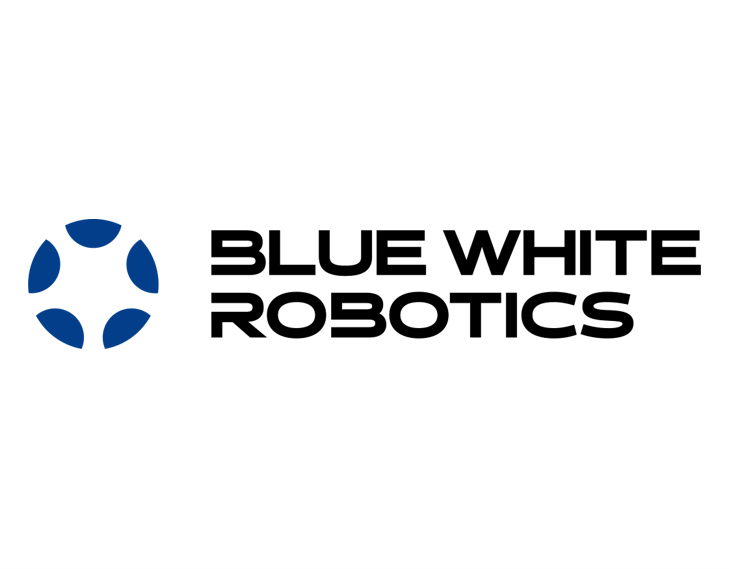
Blue White Robotics
The startup has developed a robot-as-a-service platform intended to deliver remote control capabilities for land and air autonomous robots. The platform transforms existing fleets, manages both air and ground robots, and collects data seamlessly, thereby enabling businesses to improve efficiency and provide actionable insights.

Sabi Agri
The startup has developed electric agricultural equipment for agro-ecology. The light autonomous tractors will be able to replace all thermal tractors, regardless of their power in multiple agricultural projects (viticulture, field crops, breeding…). They enable farmers to incorporate cost-effective agro-ecological farming practices.

Monarch
The startup has developed electric tractors intended to make the transition to productive and sustainable farming practices. The company’s tractors run on artificial intelligence and are equipped with sensors and 360° cameras to implement, identify and eliminate plant ailments and estimate yields, enabling farmers to enhance the existing growing operations.
Interested in a startup landscape or in an insights report?
Please fill out our contact form so that we can get back to you very quickly with our product offer.
Want to subscribe to our 123Fab?
Fill out our form to receive the latest insights into your inbox.

EIT Health and Biogen are joining forces to launch ‘neurotechprize’ to advance promising technology solutions addressing Alzheimer’s Disease (AD) from around the globe.
Through the neurotechprize, they aim to accelerate the most promising solutions and technologies addressing the challenge of AD in Germany.
Aster Fab is thrilled to have supported Biogen and the neurotechlab in the design and organization of the prize.
**
4 AREAS OF FOCUS
EIT Health and Biogen have identified four areas of focus that could make a difference in the life of people diagnosed with AD:
1. Accelerating the diagnostic pathway
2. Improving disease monitoring
3. Easing burden on patients
4. Maintaining quality of life
**
THE PROGRAM
The program is aimed at health entrepreneurs in the neurotech space seeking support in the validation of their ideas and developing business goals in a supportive and enriching environment.
The program offers participants:
- A tailored three-month journey focused on your team’s objectives, established individually at the beginning of the program
- Intensive mentoring from top experts in business and science
- Access to industry stakeholders
- 10,000€ funding to support participation of founders and/or key team members in the journey
**
ADMISSION PROCESS
Shortlisted teams will be invited for an online interview directly by EIT Health staff and Biogen experts. The interviews will take place between 20-26 January 2022. Shortlisted teams will be able to book the time for the interview via link provided in the invitation.
The application score and the result of the online interview will be combined to draw up a list of teams selected to pitch live in front of the Jury.
Up to 15 shortlisted teams (Semi-Finalists) will be invited to pitch their solution in front of the Jury on February 1st, 2022 to secure their spot in the program. The Jury will select up-to 10 teams (Finalists) who will be invited to enter the program (Finalists).
**
THE PRIZE
The Jury will be able to award up-to two prizes:
- 1st Prize of 100,000€ for the winning solution
- 2nd Prize of 50,000€ for the runner-up
